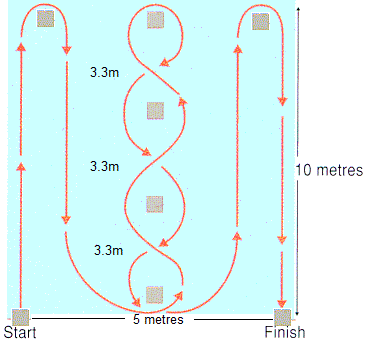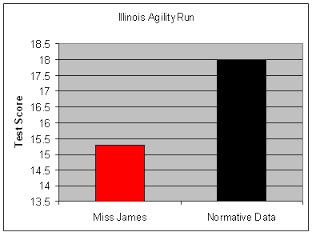Data Types
As will be demonstrated, different methods of data collection collates different types of data. The type of data collated can positively or negatively impact the effectiveness of each method. Before considering the different methods of data collection and their effectiveness, let’s look at these different types of data.
Different data types


1) QUANTITATIVE DATA = OBJECTIVE INFORMATION
Quantitative data provides objective information about a performance with no personal opinion attached. This type of data is usually a quantity such as a time or a measurement.
E.g. Standardised Tests such as the Illinois Agility Test will provide a performer with a time that it took them to complete the test. This is quantitative and objective as it is a time – it is not a matter of personal opinion.
2) QUALITATIVE DATA = SUBJECTIVE INFORMATION
Qualitative data is open to subjectivity as opinions play a role due to you, a partner or a coach providing/recording information.
E.g. Questionnaires like the Youth Sports Environment Questionnaire is subjective because you have to reflect on your Teams Dynamics and provide your opinion on how true statements are.


3) PARTIALLY SUBJECTIVE/OBJECTIVE DATA
If we think about a continuum, the above two data types represent the extremes: on 1 side we have quantitative/objective data like Standardised Tests and on the opposite end we have qualitative/subjective data like the Youth Sports Environment Questionnaire. However, it is not all black and white; there is some grey area in the middle referred to as partially subjective/objective data as coaches and/or teachers look to overcome potential reliability issues whilst minimising the subjectivity of data.
The following are common examples of the above:
a) Methods such as observation schedules and disciplinary records can be used in conjunction with video analysis; this can allow performers/markers to watch the play back, pause it and slow it down to ensure they are completing it correctly.
b) Two people may be involved in completing these methods within what are typically fast paced environments; one person can call out what is happening with the other filling in the information on the sheet to ensure information is not missed.
c) When completing any method that contains elements of subjectivity, a knowledgeable other such as a coach or a teacher may read over the answers to ensure they are correct.
NEXT STEPS:
When using different methods of data collection, consider where on this ‘continuum of data collection’ you would place them. If the method produces fully subjective/qualitative data, consider what steps you could take to make this data more objective and trustworthy.
Before looking at these methods however, we need to have a knowledge of their effectiveness in order to select the most appropriate ones.

